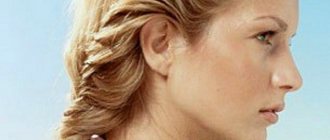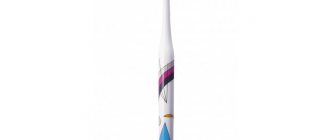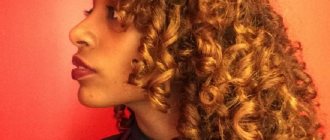The role of nutrition in cleansing children's intestines
Now we will tell you how to cleanse the intestines of children aged 2 years and older using nutrition.
Start introducing fermented milk products with live bacteria into your baby’s diet. The stool should normalize, and toxins and waste will begin to be eliminated. To improve the effect, give your baby Brussels sprouts, radishes, and fruits. Children's nutritionists recommend giving children apple dishes. Sweet fruits can be baked in the oven or chopped for fruit salad with raisins and other dried fruits. You should teach your child to have breakfast no later than 9-10 am. For breakfast, prepare him porridge with butter, vegetable salad, and bran bread.
To cleanse a child’s intestines with proper nutrition, the diet must be balanced. The menu should consist of half of vegetables and fruits, a third of carbohydrates (cereals, legumes), a little less protein (meat, eggs, fish) and even less fats and sugars.
Let us immediately note that it is possible to cleanse the intestines of a child at 6-7 years old or another age with the help of nutrition, but the process is long. To get faster results, use the recipes described above or consult your pediatrician about an enema.
One of the main requirements for healthy sleep is bed hygiene. When you have a clean, replaceable duvet cover, sheet and pillowcase, your skin does not develop allergies and it is much more comfortable to sleep on such things. But do not forget that very often not only the surface materials remain dirty, but the pillow, blanket and mattress themselves, which are the most difficult to clean and have to be done manually.
A bed for adults usually gets dirty with dust and sweat, so it is enough to vacuum the mattress twice a year and remove the cover for washing. But not all beds may have a cover. Their absence requires a more thorough cleaning method. Children's mattresses get damaged much more seriously: food mixtures, urine stains, and the like. It is very difficult to eliminate such contamination, but it is extremely necessary to maintain the hygiene of a child’s sleeping place.
Rules for cleaning the ears of older children
For older children, the basic rules for cleaning ears remain the same.
You should use the same cotton swabs with limiters or cotton swabs, and under no circumstances should you clean the inside of the ear canal, only the auricle should be treated, since the ears independently throw out excess wax into the outer shell.
Basic rules for caring for the ears of young and middle-aged children:
It is important for parents to pay close attention to the child’s behavior and promptly contact an otolaryngologist in case of complaints or discomfort in the ears; there is no need to self-medicate, resort to instilling various oils into the ears, it is worth clarifying the diagnosis with a specialist first of all and only then following his recommendations; there is no need to overuse frequent ear cleaning, this will cause accelerated production of wax by the glands; We must not forget that the presence of a certain amount of sulfur inside is a prerequisite for the healthy functioning of the ear, since sulfur is a natural barrier and does not allow bacteria and infections into the child’s hearing organs; during cleaning, it is better to sit the child on a chair and calm him down in advance, so that there is no unnecessary excitement and sudden movements, it is important to try to calm the child and carefully begin cleaning the ears using cotton swabs soaked in warm water or cotton swabs with a limiter; there is no need to try to tear off the stuck dry wax or crusts, these can easily cause discomfort to the child, you should first soften them with oil or cream and then remove them; It is important for mothers to avoid attempts to get a piece of wax out of the ear canal, this is a high risk of injury to the child, and often such attempts end in a cerumen plug, and maybe otitis media; Some mothers independently wash out wax plugs for their children using hydrogen peroxide, this is a common method, but it is better to seek advice and an accurate diagnosis from a doctor, since peroxide should not be used for hypersensitivity and otitis media.
So, now every parent clearly understands how important it is not only to promptly, but also to clean the ears of themselves and their children correctly. By following simple rules and advice, you can prevent many diseases.
Don’t be lazy about changing your habits and teach your children how to maintain proper hygiene, this will help avoid unnecessary problems.
To clean or not to clean – that is the question
Is it possible and necessary to clean children's ears? Despite the widespread belief that wax is a sign of unkemptness, there is no need to clean children’s ears again, and even less so to clean out discharge from the ear canal. The ear canal contains glands that produce wax. In addition, unnecessary dead cells are separated from the skin, but there is no need to rush to clean all this from the child’s ears. Let's find out why.
Sulfur is not the most useful substance in the body, sometimes it causes itching, and it looks unpleasant, but despite these factors, it performs a protective function, namely, it does not allow the eardrum to dry out. In addition, sulfur does not allow pathogenic microbes and dirt to penetrate inside the ear canal. Earwax deficiency leads to various diseases. On the other hand, the more thoroughly we clean it out of our ears, the more it is produced. It turns out that by thoroughly cleansing, parents complicate the situation.
Undoubtedly, the released wax can cause a plug and interfere with the functioning of the ear, thereby impairing hearing. However, the human body participates in natural cleansing processes. The ear canals contain villi that push the wax out, where it can be easily removed. These villi begin to act actively during jaw movements, during eating, talking, laughing, etc.
Is it really not worth cleaning your ears at all? Hygiene is necessary, but only the outer part of the ear needs to be cleaned. The sulfur that has come out needs to be removed.
If the ears are not properly cleaned in children under 1-2 years of age, otitis may develop. Cases of violation of the integrity of the eardrum when trying to pick in the ear canal are not so rare. Even if the listed unpleasant consequences do not occur, cleaning the inside of the ears on your own does not lead to anything good. The sulfur will only penetrate deeper inside and form into a dense plug that will have to be removed in the hospital.
General hygiene rules
Caring for your baby's ears should be done daily, preferably after an evening bath. To carry out hygiene procedures, it is prohibited to use any liquids other than warm boiled water. You should not instill medications to prevent ear diseases and wax accumulation without special instructions from your doctor. To treat each ear, you must use a separate cotton pad or swab.
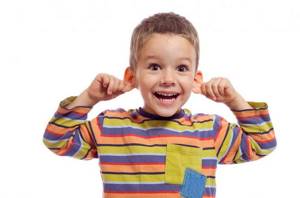
Ear care is a mandatory hygiene procedure for both children and adults.
Ear care
Let's look at how to clean the ears of a newborn baby in accordance with the recommendations of pediatricians. Hygienic procedures should only be carried out while lying on your side:
- Moisten a cotton pad or swab with a small amount of boiled water at a temperature of 36.0-37.0 °C and squeeze thoroughly. It is not allowed for water to drip from the cotton wool, as accidental entry of liquid into the ear canal can lead to severe discomfort and even otitis media.
- Carefully process the outer part of the auricle, moving in the direction of the curls. Do not put too much pressure on the baby's delicate skin or pull on the earlobe.
- Take a new cotton swab, moisten it with water, squeeze it out and thoroughly rinse the area behind the ear and the inner surface of the ear. The vast majority of babies sweat a lot, the secreted liquid accumulates in the skin folds, leading to the development of prickly heat, diaper rash, dermatitis, and the appearance of an unpleasant odor.
- If necessary, remove residual moisture with a dry cotton pad.
- If crusts or diaper rashes appear behind the ears, lubricate the affected areas of the skin with Vaseline or sterilized sunflower oil.
- Repeat all manipulations with the other ear.
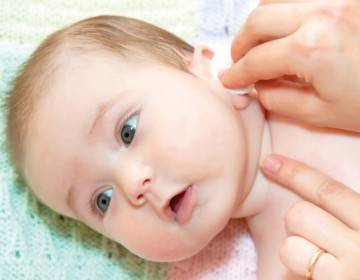
You should use cotton pads to care for your child's ears.
Removing excess sulfur
Most pediatricians categorically prohibit removing wax secretions from the external auditory canal of infants. Excessive hygiene leads to the development of dangerous conditions:
- high risk of damage to the eardrum;
- disruption of natural microflora, loss of protective functions, weakening of resistance to fungi, bacteria and other pathogenic microorganisms;
- microtrauma of the skin, infection;
- compacting the secretion and pushing it deep into the ear canal, resulting in the formation of a cerumen plug, which can only be removed by a doctor;
- even more intense synthesis of earwax due to mechanical stimulation of the ceruminous glands.
To care for a child's ears, use cotton swabs with a limiter.
It is allowed to remove only pieces of wax that have fallen into the cavity of the auricle or are located in the outer part of the external auditory canal. Independent extraction of excess sulfur secretion occurs during the work of the facial muscles during chewing or sucking.
Before cleaning an infant's ears in the external auditory canal area, it is recommended to consult a pediatrician. To remove accumulated sulfur, you need to twist two thick cotton wool turundas 3-4 cm long. To remove dirt more effectively, you can moisten their ends with a small amount of warm boiled water or sterile Vaseline oil. Holding the baby in a horizontal position on his side, with careful screwing movements, immerse the moistened part of the turunda into the ear canal to a depth of no more than 0.5 cm and remove it along with adhered contaminants. Repeat the procedure for the other ear.
If you are unable to properly clean your newborn's ear canal, do not try again. This can damage delicate skin and push the wax even deeper. It is prohibited to replace soft turundas with cotton swabs, matches and other hard objects. Starting from the age of 3-4 months, special baby cotton swabs with a limiter can be used to clean the ears.
Need for cleaning
There is a claim that our ears are capable of self-cleaning. The wax that has accumulated in the ear canals binds harmful bacteria from the external environment and lubricates the hearing aid. However, with excessive secretion of sulfur, plugs (cerumens) are formed, obscuring the ear canal.
So, how to clean your baby's ears? Here nature took care of the baby: in order to move the plug and clear the passage, you need to move your jaw. Since the baby constantly suckles at the breast, the need for cleaning disappears by itself. The parent’s task is to clean the external ears with a soft cotton swab.
Cleaning with cotton swabs in a child under one year old can cause inflammation (otitis), which in the future will only need to be treated with medication, so cotton swabs should be put aside for a while.
With soap and water
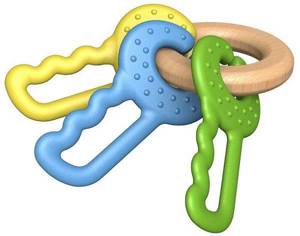
Some toys, such as plastic baby rattles and teethers, can be easily washed in the sink with soap and warm water. This is enough to keep them clean. This is, however, not the safest way to wash any electrical toys. Even toys that include removable batteries cannot be washed with soap under running water, because this may affect the future use of the toy (the battery pack may become damaged). They need to be wiped with damp antiseptic wipes.
How to clean wax from your child's ears
The best time to clean your baby's ears is after taking a bath or shower. In this case, the sulfur becomes softer and can be easily removed.
Remember an important rule! When cleaning, only wipe the outer ear. Remember how to clean a child’s ears at 3 years old is different from the cleaning method for infants
Remember how to clean the ears of a 3-year-old child is different from the cleaning method for infants.
- To eliminate excess, swipe a cotton pad or a specialized swab over the child’s outer ear. You can purchase them at any pharmacy;
- then place the child on one side and gently wipe the outside of the ear;
- Many parents ignore the area behind the ears. Don't forget to clean this area too. This is where most of the bacteria that cause infectious diseases accumulate.
Ear cleansers
To maintain the effect, young parents use specialized drops or hydrogen peroxide that dissolve sulfur. These methods are not always correct, so let’s look at the following topic: how to clean a child’s ears?
Remember an important rule: the use of hydrogen peroxide on small children is prohibited! Even 3% peroxide can cause a serious burn and damage the eardrum. Don't risk your child's health! In the modern world, there are gentle and delicate drugs that do not harm human health.
For example, Remo-Vax ear drops
In the modern world, there are gentle and delicate drugs that do not harm human health. For example, Remo-Vax ear drops.
Place them three drops at a time. To do this, first place the baby on one side. Then pull your earlobe down and carefully drip the drug, strictly following the dosage.
Let your baby lie in this position for a few minutes, and then turn him to the other side. Place a towel under your head first. The product will dissolve the existing wax plug and flow onto the fabric.
After applying to the other ear, follow the same rules.
This method is convenient for young parents, since the baby does not experience discomfort or pain.
Wax removal
To clean the child's ears from wax, you need to use cotton wool rolled into a small rope or a cotton swab. It should be noted that cotton swabs for adults are not suitable for this manipulation, as they can damage the eardrum. It is better to buy special baby cotton swabs at a baby hygiene store or at a pharmacy. Such sticks have a special limiter that will not allow penetration into the ear deeper than is permissible, so they are safe for such a hygienic procedure.
If you carry out the procedure after an evening swim, it is not necessary to wet the stick, but if after a meal, then soak it in warm boiled water or in a three percent solution of hydrogen peroxide. Pulling the child's ear down and back a little with one hand, very carefully wipe all the folds of the ear and remove visible dirt with the other. If the dirt in the ear has dried and cannot be removed, lubricate the outer visible part of the ear with warm Vaseline oil, wait five minutes and then you can clean it again. Change the cleaning equipment you use when it gets dirty.
Cleansing methods
Removing secretions using a nasal aspirator.
Purchase a ready-made device at the pharmacy, consisting of plastic tubes with flexible anatomical tips, an absorbent filter, a replaceable nozzle, and a mouthpiece. Two drops of saline solution are dripped into the nose.
When the crusts have softened, you can begin aspiration. Remove the crusts with a cotton swab, insert a flexible tip with a tube connected to the filter into one nostril. Through another tube, suck in air through your mouth.
The accumulated mucus will be evacuated into the container. Do a similar procedure with the second nostril. When working with one nasal passage, the other should be closed.
Mechanical aspiration.
It is carried out using a regular syringe without a plastic tip with a tip of the smallest diameter. After dripping saline into the nose, dip a cotton swab in Vaseline and insert it into the nasal passage no more than 2 cm. Make circular movements with the bandage, then carefully pull it out. If the snot is not completely removed, repeat the procedure with a clean flagellum.
How to clear a child’s nose not only effectively, but also absolutely safely?
Use an electronic suction. This is a modern device, which is a small case with a power button and a tube with a nozzle. You just need to insert the soft tip shallowly into the nostril and turn on the aspirator. The discharge will flow into the container on its own.
When should you sound the alarm after cleaning?
Cleaning the ear canals with cotton swabs (or matches with wound cotton wool) is a traumatic procedure. According to statistics, approximately 70% of eardrum injuries occur due to poor ear hygiene. If after the procedure there is discomfort, pain, hearing loss or bleeding, you should immediately consult a doctor.
Pain
Sharp pain in the ear that occurs during ear cleaning most often indicates a traumatic injury to the eardrum or the wall of the ear canal. Minor injuries may go away on their own; sometimes it is useful to drip castor, sea buckthorn or olive oil into the ear. If the symptoms do not decrease within 1-2 hours, this indicates the seriousness of the injury; in this case, a visit to the doctor cannot be avoided
It is important to remember that trauma to the affected area can trigger otitis media.
Blood
Blood in the ear canal is evidence of a dangerous health condition. The cause of the appearance of blood can be not only injuries during cleaning, but also various diseases:
- otitis;
- fungal infection;
- skull injuries preceding the procedure;
- hypertensive crisis;
- neoplasms (polyps or tumor).
The most common cause of bleeding is still injuries caused by improper ear cleaning. Sometimes the cause can be determined by simply examining the ear using a flashlight. If the source of the blood is a scratch on the wall of the ear canal, and little blood is released, you can take measures on your own to avoid visiting a doctor. It is enough to insert a cotton pad into the damaged area. The damaged ear should be protected from infection and cleaning should be avoided while it is healing.
Congestion
The following can create a feeling of stuffiness after ear cleaning:
- residual fluid inside the ear canal;
- blockage of the passage with cotton wool;
- eardrum injury;
- accumulation and compaction of sulfur plugs near the membrane.
Congestion can also be caused by otitis media; the swelling that occurs during inflammation blocks the ear canal and interferes with the normal functioning of the hearing organ.
In what cases should you immediately consult a doctor?
Young children can sometimes push small objects into their ears. You should not try to remove the foreign body yourself. When a foreign object enters the ear, it irritates the internal environment. If parents try to remove it themselves, there is a high probability of severe damage to the ear cavity, which can lead to suppuration and inflammation. If your baby puts something in his ear, it is important to go to the doctor immediately.
Do not postpone your visit to the doctor if you notice that:
- No wax is released from the ear canal. You should not get it out yourself. The doctor will be able to solve this problem quickly and without pain.
- The baby's ears smell unpleasant.
- Discharge comes out of the baby's ear canal.
- The sulfur has changed consistency and color. The shade of sulfur in its normal state is from yellow to brown. If the color has changed, an urgent consultation with an ENT specialist is needed.
- The ear became red and inflamed.
Parotid area care
Every mother should know that hygiene procedures need to be carried out not only inside the ear, but also near them. Often, careless or inattentive treatment of the area behind the ear leads to unpleasant consequences. Thus, moisture behind a baby’s ears can damage the skin and cause infection.
The appearance of “crusts”
Failure to maintain hygiene leads to these consequences. During feeding, drops of milk or particles of the mixture may flow down the baby's cheeks and get into the ears and folds. If mom does not notice and does not wipe off the liquid, it will dry out and contribute to the appearance of a crust (we recommend reading:). In the future, this can cause itching and redness, and removing the crusts will cause pain to the newborn.
Also, the appearance of crusts can be the result of an allergic reaction to unfamiliar foods that a nursing mother has eaten, baby cream or oil. You need to analyze what could have caused the allergy behind the ears, eliminate this food from your diet in the future, or stop using the suspicious drug.
The appearance of diaper rash
A very unpleasant phenomenon that can cause serious discomfort to the baby.
Inflammation of the skin behind the ears can occur due to the accumulation of moisture that remains after bathing, so it is extremely important to blot the ears and the area behind them with a towel after water procedures, and also not to put on a cap immediately after the bath. When diaper rash does not go away, you should not delay going to the doctor
He will prescribe an antiseptic ointment that will help get rid of inflammation.
After reading this article, you learned how to care for your baby's ears. By following simple recommendations and carrying out regular hygiene procedures, you can protect your baby from developing various hearing diseases.
(1
rated
5.00
out of
5
)
When caring for a baby, a new mother may have many questions. And, of course, this is absolutely normal: after all, a woman not only strives to take care of the child, but is also afraid of overdoing it and harming him. Therefore, the question “how to clean a child’s ears and how to do it correctly?” is quite common.
- an integral component of the health and well-being of the baby. And, carefully caring for the child’s entire body, it would be strange to exclude the ears from this process. But if you act incorrectly, you can really harm the baby and provoke, for example, development. So
How to properly clean a child's ears? And is it even worth doing this?
For babies
How to properly clean the ears of a child under one year of age and is it worth doing it at all? The accumulated wax in a child's ear canal can come out on its own. During bathing, the baby steams, the ears take on a high amount of steam, and the wax becomes soaked, falling behind the wall of the ear canal. Often after bathing, the baby will notice an orange lump. This is the same accumulated sulfur. Simply blot it with a cotton pad, removing any residue from the outside of the ear.
How to clean a baby's ears
To understand what can be done when caring for a child’s ears, and what absolutely cannot be done, you need to know about some of their features. We all know that both adults and children produce sulfur in their auditory organs. And this is not dirt, as some people think. This is a very useful secretion, which not only acts as a natural lubricant, but also protects the inner ear from foreign particles entering it, causing infections and inflammation. Sulfur, which has honestly served its term, leaves the ear canal over time without outside interference, and new ones are produced by the glands located inside the ear. Thus, the ears clean themselves quite successfully. And we help them in this in some way (thanks to the special structure of the temporomandibular joint) by making active movements of the jaw. This happens during eating, coughing, laughing, sneezing, and talking. By doing this we help move sulfur out.
Considering all of the above, the answer to the question “
Is it possible to clean your ears?
How to bury your nose correctly
- The best position for instilling drops is lying on your back;
- For a newborn, fix the head with your hand; for children over 6 years old, turn the head to the side;
- put drops into the nostril, which is located below;
- close the dripped nostril with your finger for a minute, then release;
- then turn your head to the other side, do the same with the second nostril;
- children over 7 years old can stand or sit while instillation, but it will be more comfortable to lie down;
- children over 8 years old can use nasal drips on their own, but parents must supervise the process to prevent an overdose of the medicine; There is no need to tilt your head back to administer the spray.
Parents should ensure that sick children have proper room conditions. Ventilate and wet clean the room more often.
Remember that the main condition for recovery is timely adequate therapy. Contact your doctor at the first suspicion of a cold, follow the prescribed procedures, properly cleanse your sinuses of mucous secretions and everything will be fine.
With the birth of a baby, a young mother has many questions. One of them is how to properly clean a child’s ears without damaging the vital elements in the hearing organ? Maintaining hygiene is an important component in a person’s life.
Colds, flu and runny nose can affect the baby's nasopharynx at any time. To avoid these unpleasant factors, you should clean your ears daily.
In addition to human balance, the functioning of the hearing organ includes the production of sulfur
.
It naturally envelops the walls of the ear canal and protects against negative influences. Including bacteria and small animals.
It is released independently during conversation or eating. effectively removed when the baby sings.
However, if hygiene is not observed, sulfur can accumulate and form plugs
.
They cause a lot of inconvenience. The baby feels pain in the ear and head, and also loses hearing.
In addition, it can leak into the external passage, causing itching and irritation of the skin.
To determine the presence of wax plug, pay attention to the following symptoms:
- the baby complains of loss of sensitivity to sounds;
- often obstructs the hearing organ;
- in special cases, the child hears his voice from within.
To get rid of this unpleasant factor, an adult just needs to use special drops
, which gently and delicately eliminate the problem. But doctors strictly prohibit their use on children. Therefore, the question arises, how to clean children’s ears?
To prevent diseases such as otitis media from occurring, children need to wash their ears daily.
There are safety rules
while maintaining hygiene and general well-being of the baby.
- Check your ear health every day.
- Wash the ears
of both infants and older children every day. At the same time, try to avoid getting water inside. - After taking a shower, wipe the baby's ear organ
. If fluid gets into the middle ear, it can cause an acute or severe infection. - Cleaning the hearing organ is allowed no more than once a week.
- Cleansing should be carried out with specialized sticks with limiters
so as not to injure the middle ear. Children's sticks differ from standard ones in their rounded shape and softer composition.
If you didn't keep an eye on your baby
, and water flows into the hearing organ while taking a bath, use it. Place the flagellum, after moistening it in olive oil, into the child’s ear. Thus, the cotton wool will absorb the liquid.
After two years
When the baby has grown up, it seems that the issue of cleaning the ears has become irrelevant: it is enough to persuade the baby to sit still.
However, the risk of eardrum injury still exists. Deep penetration of a cotton swab initially causes sharp acute pain, then swelling of the canal and the development of an inflammatory process. Such manipulation may result in infection and complete/partial deafness. Treatment will take about a month and will require the use of medications and painkillers.
Therefore, a safe option for cleaning the ear of a 2-3 year old child is bathing, then using special ear sticks with a limiter. The limiter acts as a kind of warning factor that does not allow cleaning deeper than allowed.
Using oils recommended by friends for cleaning is strictly prohibited. Excess moisture and fatty oils (sea buckthorn, olive) contribute to the accumulation of dust on the treated surface of the ear, at the same time collecting harmful bacteria that cause infectious otitis media.
Children over three years old can tell what and where it hurts.
It is important to listen to these symptoms:
- itchy ears (too much accumulated moisture causes itching);
- hurts, colitis, cuts periodically or constantly (manifestations of otitis media);
- a feeling as if something was hanging out inside the ear, moving (presence of cerumen plug);
- sore throat and ear, stuffy nose (ear-nose-throat relationship, infection spreads throughout the canal area);
- fever, chills and ear pain are a symptom of acute infectious otitis media that requires immediate treatment in a hospital;
- hears his own voice, echo (traffic jam).
These symptoms are associated with the presence of an inflammatory process, the occurrence of a plug, and otitis media. To extract cerumen yourself, you need to have knowledge in the field of medicine, therefore, without an ENT specialist, trying to remove the plug from the ear is strictly prohibited. An otolaryngologist eliminates the cause of discomfort in 2 minutes, painlessly for the child. Independent extraction is fraught with serious complications and pain.
How to clean ears: step-by-step instructions
This article talks about typical ways to solve your issues, but each case is unique! If you want to find out from me how to solve your particular problem, ask your question. It's fast and free
!
It is recommended to clean your newborn's ears immediately after bathing or feeding. The wax will be closer to the passage and is better removed, and when breastfeeding, sucking movements help ensure that the wax itself “comes out” of the ear. In order to carry out the procedure effectively, correctly and painlessly for the child, you must do the following:
- Prepare cotton swabs with a limiter or gauze swabs in advance;
- Soak a cotton swab or swab in water and, turning the baby's head to one side, gently wipe the auricle and clean the ear canal;
- Take a new Q-tip and clean your other ear. You need to change sticks or tampons during the procedure as often as possible.
When cleaning a newborn's ears, do not apply force, press on the cotton swab, or pull the ear flaps to avoid damaging the ear canal. If the child resists and does not allow his ears to be cleaned, there is no need to insist.
It’s better to try to persuade the baby or reschedule the cleaning until a more favorable moment. To make it clearer how to carry out the procedure for cleaning the ears of a newborn, you can watch a video on this topic.
Important Rules
- It is not allowed to clean ears with a match or a toothpick with cotton wool. This will damage your child's hearing.
- Clean your ears with your nails cut short. If your nails are too long, wear medical gloves to avoid accidentally scratching your baby.
- Contact your doctor if: there is blood coming from your ear; after the procedure, the baby cries a lot for a long time; the baby has stopped hearing you and does not respond to external noises and sounds.
Spend just a couple of minutes a day on the hygiene of your newborn’s ears and problems associated with the health of this organ will not affect you.
Instructions for cleaning the ears of newborn children
The best time to clean your ears is after water treatments.
It is necessary to take special cotton swabs with a limiter or make cotton swabs (flagella), lightly moisten them in warm boiled water or in a weak solution of hydrogen peroxide (1%) and carefully wipe the outer ear without getting inside
It is important not to forget to wipe, including behind the ears, removing any crusts that have formed.
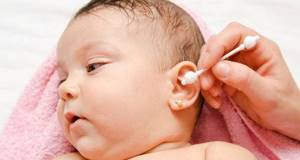
Taking care of your baby's ears
Basic rules for caring for the ears of newborn babies:
the main rule when cleaning children's ears is caution and accuracy; it is important for parents not to overdo it so as not to cause trouble for the baby; It is better to choose the time after evening swimming, when the skin is soft, in this case, excess wax and crust behind the ears are removed faster and easier; Another good time to clean your ears is after feeding (wax itself is pushed out of the ear canals due to sucking movements); many mothers prefer to clean their baby’s ears while sleeping so that the child does not become capricious; you need to make sure that after bathing there is no moisture left in the ear folds and shell, this can lead to diaper rash (it is important to wipe these areas dry); it is more convenient to clean on the changing table, placing the child on his side; carefully clean the auricle from excess wax with a moistened instrument, not forgetting to wipe the areas behind the ears (do not penetrate into the ear canal); wipe the cleaned areas dry with a towel or cotton pad to avoid diaper rash; be sure to maintain hygiene and use different flagella (sticks) for each ear; It is recommended to perform cleaning near the external auditory canal once a week or a week and a half; you can wipe the auricles and folds behind the ears daily; if water gets into your ears while swimming, you need to place a cotton swab there for a while, which will absorb excess moisture, then remove the swab and cover the ear canal with dry sterile cotton wool for several hours (so as not to get your ears cold); If the baby screams shrilly during the procedure, this may be a signal to consult a doctor; there may be inflammation in the ear or abnormality.
If after water procedures a child is capricious, scratches or rubs his ears, most likely he is worried about wax plugs.
They create a buzzing in the ears, itching, resonance from their voice, cause pain, and the baby begins to hear worse.
After bathing, the wax plugs become wet and increase in volume, thereby putting pressure on the eardrum, which immediately alarms the child.
In such cases, you should not self-medicate; you should immediately contact a specialist for help.
The ENT specialist will examine the child and remove the plug using a syringe and a powerful jet, after which the ears are examined again for the presence of wax and filled with a cotton swab for a while.
It may be necessary to further soften the plug before removing it; for this, the doctor usually prescribes warm vegetable oil or hydrogen peroxide (for children over 6 months) instilled into each ear in the mornings and evenings for three days.
Using hydrogen peroxide
An effective method of cleaning the ear is using hydrogen peroxide. A 3% hydrogen peroxide solution is intended exclusively for external use, so before cleaning your child’s ears using this method, you should consult with an otolaryngologist. The use of peroxide for children under three years of age is strictly prohibited.
You need to pour 15 drops of the solution inside the ear (pre-heat a bottle of peroxide in your hands). The child’s head should be turned so that the solution does not flow out (5 minutes). You need to put a piece of cotton swab in your ear (to prevent peroxide from leaking out). During this time, the sulfur plug gets wet, and a feeling of discomfort arises. The reaction caused by hydrogen peroxide helps to soften the wax, peeling off the plug from the surface of the ear canal. Next, moisten a cotton swab with warm water and clean the ear canal.
Important! If acute pain or discomfort occurs in the ears while cleaning with a cotton swab, manipulations should be stopped. Do not penetrate deep into the ear, perform the actions in a well-lit place, without using sharp, hard objects to remove the wax plug.
How to quickly clean a sofa and refresh the upholstery at home:
Prepare the necessary equipment and cleaning products (hand or regular vacuum cleaner, sponge and soft brush, paper napkins, a piece of light cloth or an old sheet, mild detergent, baking soda and vinegar)
Vacuum the sofa, paying special attention to the places under the pillows, near the armrests and at the back (this is where a large amount of dirt and debris accumulates). If you have a vacuum cleaner with weak traction, you can use another method and remove dust by using a damp sheet for these purposes. Spread it on the sofa and beat out the dust with a carpet beater
This method allows you to remove a large amount of dirt and dust not only from the surface, but also from the filler. You should rinse the sheet and repeat the procedure again. In order to refresh the color of the upholstery, carry out light disinfection and neutralize possible unpleasant odors, make a liquid mixture of water and vinegar (1 liter of water and 1 tablespoon of vinegar). Now you can clean the upholstery using a spray bottle and a sponge, and you can easily get rid of greasy places on the sofa using water, detergent and soda (1 liter of water, 1 tablespoon of baking soda and 1 teaspoon of detergent). Treat the fabric with the solution, rinse with plain water and leave to dry. Try not to wet the surface of the upholstery too much, as this may lead to an unpleasant odor or the growth of harmful microorganisms. Use paper napkins to remove excess moisture or take the sofa out to the balcony and let it air out in the fresh air. Avoid direct exposure to sunlight as this can cause fabric fading, streaks and changes in upholstery colours.
Symptoms of ear plugs in adults and children
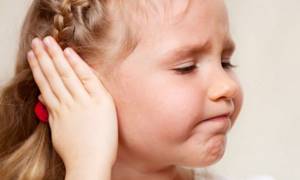
The main symptom of earwax is hearing loss.
A symptom of wax plug in the ears is hearing loss in the ear where the plug has formed. If even the entire ear is filled with wax, but there is a small gap to the eardrum, then this will not manifest itself in any way.
Most often, a person finds out that he has plugs in his ears , or in one ear, after swimming , when water gets into his ears and wax swells. This is manifested by the following symptoms :
- Noise in the ears
- Ear congestion
- You hear your own voice in your ears or in one ear
If the plug is located close to the eardrum and can touch it, then the following symptoms may appear:
- Headache
- State of nausea
- My head is spinning
- Sometimes cough
- Heart problems
The wax plug is initially loose, and then if it is not removed from the ear, it thickens and becomes rocky.
Precautionary measures
They are divided into several types:
- monoblock;
- spring;
- with artificial/natural filler;
- orthopedic;
- anti-decubitus
In any of them, dirt accumulates over time, which should be removed regularly and precautions should be followed. Firstly, you should use a case
Secondly, you need to turn the mattress over 1-2 times a month (more detailed instructions are attached to each product on the packaging). Third, vacuum every 3 weeks. Fourthly, when stains appear, you should start cleaning immediately, and not leave it for “later” or dry it.
We must not forget that sleeping area hygiene depends entirely on standard etiquette rules. If possible, try not to eat in bed. From time to time you should dry the mattress in the fresh air, preferably in the bright rays of the sun (and not in the shade). This will allow you to get rid of harmful bacteria and even microorganisms living inside the filler.
And of course, if the sleeping place is intended for a baby or a disabled person who often voids in their sleep, then experts recommend placing the client or cellophane under the cover, which will save the mattress and allow cleaning much more often and without difficulty.
Knowing how to clean a child's mattress from urine, any mother will be able to maintain crib hygiene in perfect condition.
It may not be a coincidence that after a trip to a museum or festival with lots of hands-on activities and toys to touch, children feel unwell the next day and may even get sick. Lots of people, new places and things - all this is not the healthiest environment for a child. Cleanliness and hygiene are very important, especially if the child likes to carry toys with him to kindergarten or outside
It is also very important to clean the toys in the house if the child is sick and after illness.
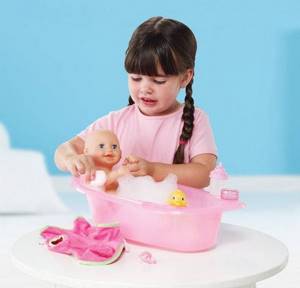
Have you ever wondered how to clean children's toys effectively and safely?
Young children often put toys into their mouths. Usually these are rubber toys; they can simply be washed with soap (and more often). Preschool children like to play with different toys that they can manipulate, like building blocks and trains, cars, dolls. However, children quickly spread diseases to other children simply by playing with shared toys, touching shared things, especially during a group meeting, a trip with a class, or a kindergarten group.
Kindergartens and child care centers have their own specific guidelines for keeping toys clean. However, there are some practical solutions for parents to keep their children's toys clean at home.
How to bury your nose correctly
- The best position for instilling drops is lying on your back;
- For a newborn, fix the head with your hand; for children over 6 years old, turn the head to the side;
- put drops into the nostril, which is located below;
- close the dripped nostril with your finger for a minute, then release;
- then turn your head to the other side, do the same with the second nostril;
- children over 7 years old can stand or sit while instillation, but it will be more comfortable to lie down;
- children over 8 years old can use nasal drips on their own, but parents must supervise the process to prevent an overdose of the medicine; There is no need to tilt your head back to administer the spray.
Parents should ensure that sick children have proper room conditions. Ventilate and wet clean the room more often.
Remember that the main condition for recovery is timely adequate therapy. Contact your doctor at the first suspicion of a cold, follow the prescribed procedures, properly cleanse your sinuses of mucous secretions and everything will be fine.
When children begin to get sick often, parents are ready to do everything necessary for treatment, but in some cases you just need to clean the child’s intestines and diseases will stop clinging to him so strongly. For example, cleansing the body of a child 2-8 years old at home is especially useful after long-term use of medications, for gastrointestinal disorders, and in many other cases, which we will now talk about.



